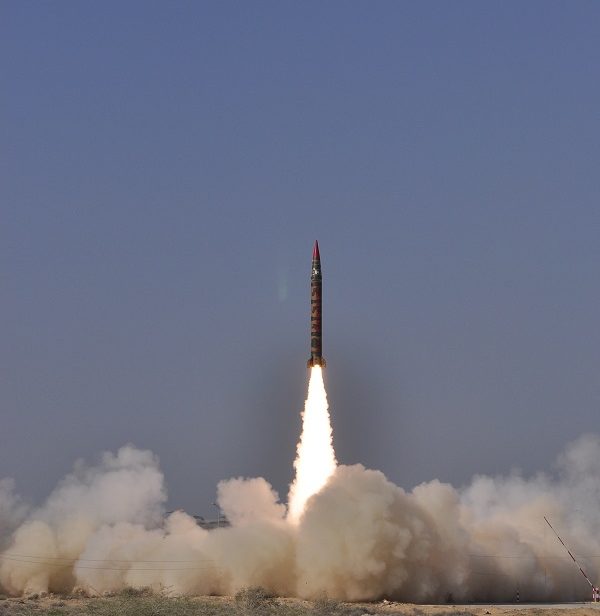
On September 29, events marked the beginning of a harsh dispute between India and Italy, as Rome decided to block India’s bid for entry into the Missile Technology Control Regime, citing the ongoing Enrica Lexie case, where Italian marines are facing trial for allegedly killing two Indian fishermen. India’s bid for entry on the one hand is the right direction as it will bolster India’s involvement into global non-proliferation architecture—where it is not a member of the Treaty on the Non-proliferation of Nuclear Weapons (NPT). Meanwhile, it is also argued that countries’ ambitions can go against the regime in developing and modernizing missile technologies. India had formally submitted an application to the MTCR in June 2015 with active support from the United States and France. It is important to note that the plenary meeting of the MTCR in Oslo did not result in India’s admission to the regime. The possibility still exists that Indian ambitions will go against the non-proliferation regime, keeping in mind its current proliferation record and its missile technology developments with looming nuclear deals.
Adhering to the government’s line, the Defence Research and Development Organisation (DRDO) already had prepared its export list as India was hopeful of joining two international regimes by October of this year. Delhi was extremely eager to have a seat at the “Big Boys’ Table” and become party to the Wassenaar Arrangement and the MTCR through strategic gospel in official quarters —after which its exports will get a boost. The MTCR is a key missile and UAV technology control committee. Indian membership would create the risk that products could be transported to India from an MTCR member under the EU’s free market rules before they are subsequently exported. Already America’s growing strategic cooperation with India in developing anti-ballistic missile defense, submarine launched systems, and dual-use intercontinental ballistic missile technologies, is destabilizing the regional equilibrium.
India’s plea of inclusion into the MTCR regime is an important issue. At the end of the India-United States Strategic and Commercial Dialogue at the State Department in Washington on 23 September 2015, the United States confirmed its support for India’s entry into the MTCR club.
Nevertheless, one of the key outcomes of the Indo-U.S. nuclear deal was that India would align itself to MTCR guidelines. The international elites should not facilitate the acquisition or improvement of that technology directly or indirectly. Over the past six years, the Indian government has time and again veered off into a murk of nuclear power politics and rejigged its export control guidelines to mirror MTCR requirements. India’s nuclear behavior is often unpredictable. First there was the case of the ‘Peaceful Nuclear Explosion’ (PNE) in 1974, by exploding a device made out of stolen fissile material from a Canadian reactor provided for peaceful usage. This was then followed by the formal acknowledgement by India as a state possessing nuclear weapons in 1998, whereas only a decade before the Rajiv Gandhi Action Plan had put forth a clear-cut roadmap aimed at universal nuclear disarmament by 2010. Indian Prime Minister Nehru floated the idea of the Comprehensive Test Ban Treaty (CTBT) in 1954, which was later blocked by India at the Conference on Disarmament in 1996. These contradictions have only highlighted the ambiguity in India’s nuclear behavior and put a question mark on the ulterior motives that guide it. Moreover, the debates that have attempted to solve this puzzle have often limited themselves to two major concerns that drive India’s behavior:national security and energy. However, in their own capacities they have often left out a cardinal element: morality.
We are moving towards dangerous weaponization of Indian society. For example, Indian manufacturing company TATA signed a framework agreement to collaborate in aerospace and defense manufacturing and potential integrated systems development opportunities, including unmanned aerial vehicles. The world community must not relax its efforts to control proliferation and should not be biased in its approach. It will create a neo-military industrial complex in India, which will fuel long term cross border conflicts to sell the weapons they will make.
The common objective of non-proliferation mechanisms such as the Fissile Material Cut-off Treaty (FMCT) as well as the NPT is to make the world safer from nuclear weapons as argued by the United States. But the Indian position is that the spent fuel is a resource to be used again as fuel. U.S. Secretary Powell in an interview said that “U.S. officials wanted to protect certain ‘red lines’ that they have with respect to proliferation, because it’s sometimes hard to separate within space launch activities and industries and nuclear programs, that which could go to weapons and which could be solely for peaceful purposes.” But a question arises- are the red lines properly protected and have not been breached till now? While keeping in mind the Indo-U.S. nuclear deal and the NSG wavier, there exists the possibility of a nuclear payload consisting of multiple nuclear warheads if MTCR entry is granted to India.
India’s entry into the regime will shape the future of India’s engagement with not just the MTCR but also the broader global non-proliferation community. The MTCR is a voluntary arrangement and does not have the ability to sanction member states that violate its guidelines. In contravention of nuclear non-proliferation rules, India’s case for entry into multilateral export technology-control cartels like the MTCR, the Australia Group, and the Wassenaar Arrangement, which otherwise is denied to other countries not party to the NPT, is setting a dangerous precedent for the global arms control regime at a time when South Asia is facing several challenges.
***


